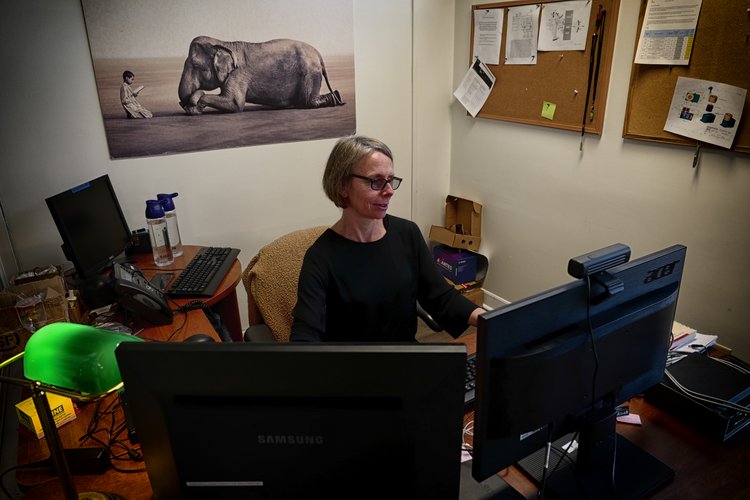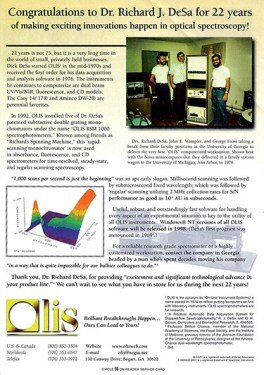The smart Trick of Circular Dichroism That Nobody is Talking About
The smart Trick of Circular Dichroism That Nobody is Talking About
Blog Article
Some Known Facts About Uv/vis.
Table of ContentsSee This Report about SpectrophotometersUv/vis Can Be Fun For AnyoneNot known Facts About Circularly Polarized LuminescenceCircularly Polarized Luminescence Can Be Fun For EveryoneUnknown Facts About Uv/vis/nir

Spectrophotometry is a tool that hinges on the quantitative analysis of particles depending on how much light is soaked up by colored substances.
The Best Strategy To Use For Spectrophotometers
A spectrophotometer is commonly utilized for the measurement of transmittance or reflectance of solutions, transparent or opaque solids, such as sleek glass, or gases. Although many biochemicals are colored, as in, they absorb visible light and therefore can be measured by colorimetric procedures, even colorless biochemicals can typically be transformed to colored substances ideal for chromogenic color-forming reactions to yield substances appropriate for colorimetric analysis.: 65 However, they can also be developed to determine the diffusivity on any of the listed light ranges that typically cover around 2002500 nm utilizing various controls and calibrations.
An example of an experiment in which spectrophotometry is used is the decision of the equilibrium constant of a solution. A certain chemical response within a solution may happen in a forward and reverse instructions, where reactants form items and products break down into reactants. At some point, this chemical response will reach a point of balance called a balance point.
All about Circular Dichroism
The quantity of light that passes through the option is a sign of the concentration of specific chemicals that do not enable light to pass through. The absorption of light is because of the interaction of light with the electronic and vibrational modes of molecules. Each type of particle has a private set of energy levels connected with the makeup of its chemical bonds and nuclei and thus will take in light of specific wavelengths, or energies, resulting in distinct spectral homes.
They are extensively used in numerous industries including semiconductors, laser and optical manufacturing, printing and forensic evaluation, as well as in labs for the research study of chemical compounds. Spectrophotometry is often utilized in measurements of enzyme activities, decisions of protein concentrations, determinations of enzymatic kinetic constants, and measurements of ligand binding reactions.: 65 Ultimately, a spectrophotometer is able to identify, depending on the control or calibration, what compounds are present in a target and exactly how much through calculations of observed wavelengths.
This would come as an option to the formerly developed spectrophotometers which were unable to absorb the ultraviolet properly.
The smart Trick of Uv/vis/nir That Nobody is Discussing
It would be discovered that this did not give satisfying results, therefore in Design B, there was a shift from a glass to a quartz prism which permitted much better absorbance results - UV/Vis/NIR (https://www.cybo.com/US-biz/on-line-instrument-systems-olis-inc). From there, Design C was born with a modification to the wavelength resolution which wound up having three systems of it produced
It was produced from 1941 to 1976 where the cost for it in 1941 was US$723 (far-UV accessories were an option at extra cost). In the words of Nobel chemistry laureate Bruce Merrifield, it was "probably the most crucial instrument ever established towards the improvement of bioscience." Once it ended up being ceased in 1976, Hewlett-Packard created the very first commercially offered diode-array spectrophotometer in 1979 known as the HP 8450A. It irradiates the sample with check out this site polychromatic light which the sample takes in depending upon its properties. Then it is transmitted back by grating the photodiode selection which identifies the wavelength region of the spectrum. Since then, the production and application of spectrophotometry devices has actually increased immensely and has become one of the most innovative instruments of our time.

How Uv/vis/nir can Save You Time, Stress, and Money.
Historically, spectrophotometers use a monochromator consisting of a diffraction grating to produce the analytical spectrum. The grating can either be movable or fixed. If a single detector, such as a photomultiplier tube or photodiode is used, the grating can be scanned stepwise (scanning spectrophotometer) so that the detector can measure the light strength at each wavelength (which will correspond to each "step").
In such systems, the grating is fixed and the intensity of each wavelength of light is measured by a various detector in the array. When making transmission measurements, the spectrophotometer quantitatively compares the portion of light that passes through a referral option and a test option, then digitally compares the intensities of the two signals and calculates the percentage of transmission of the sample compared to the recommendation standard.

Report this page